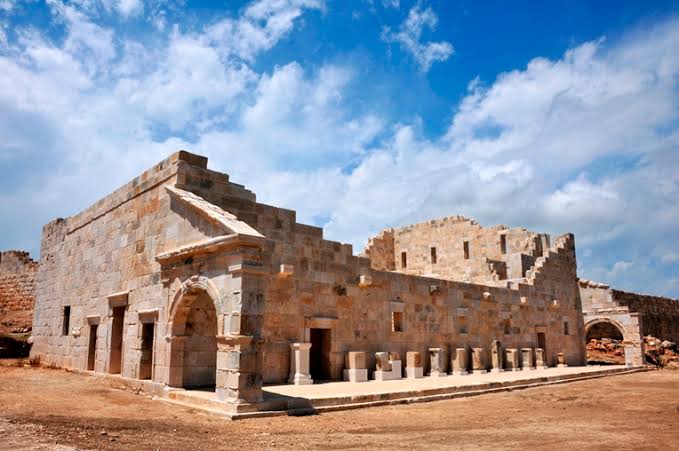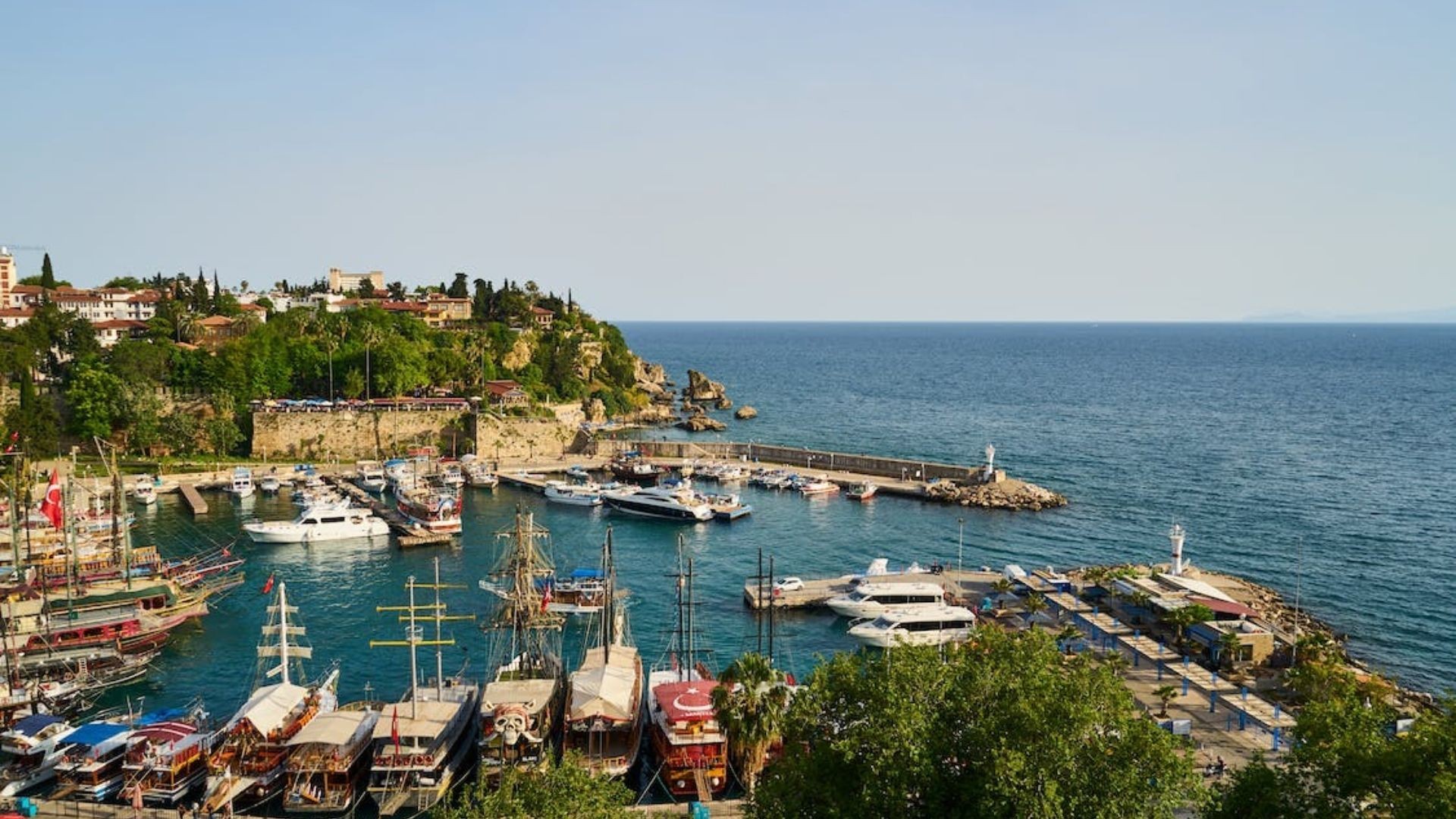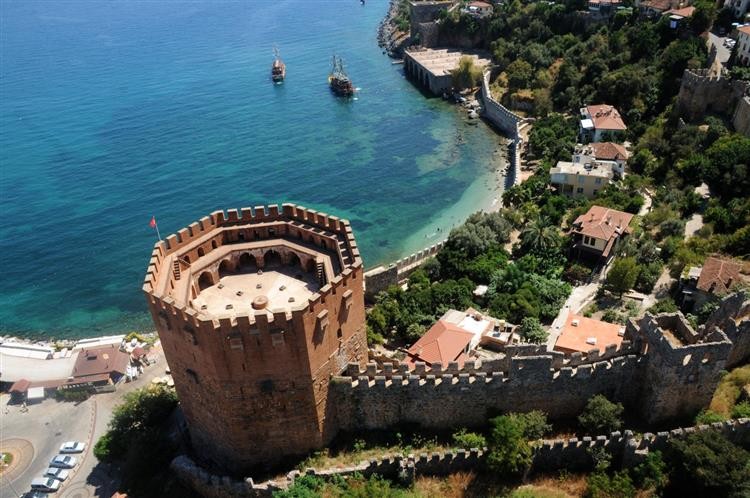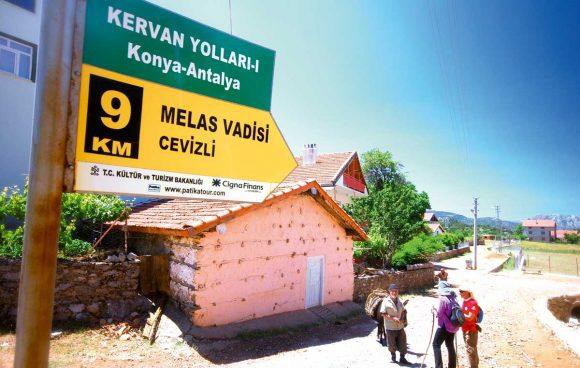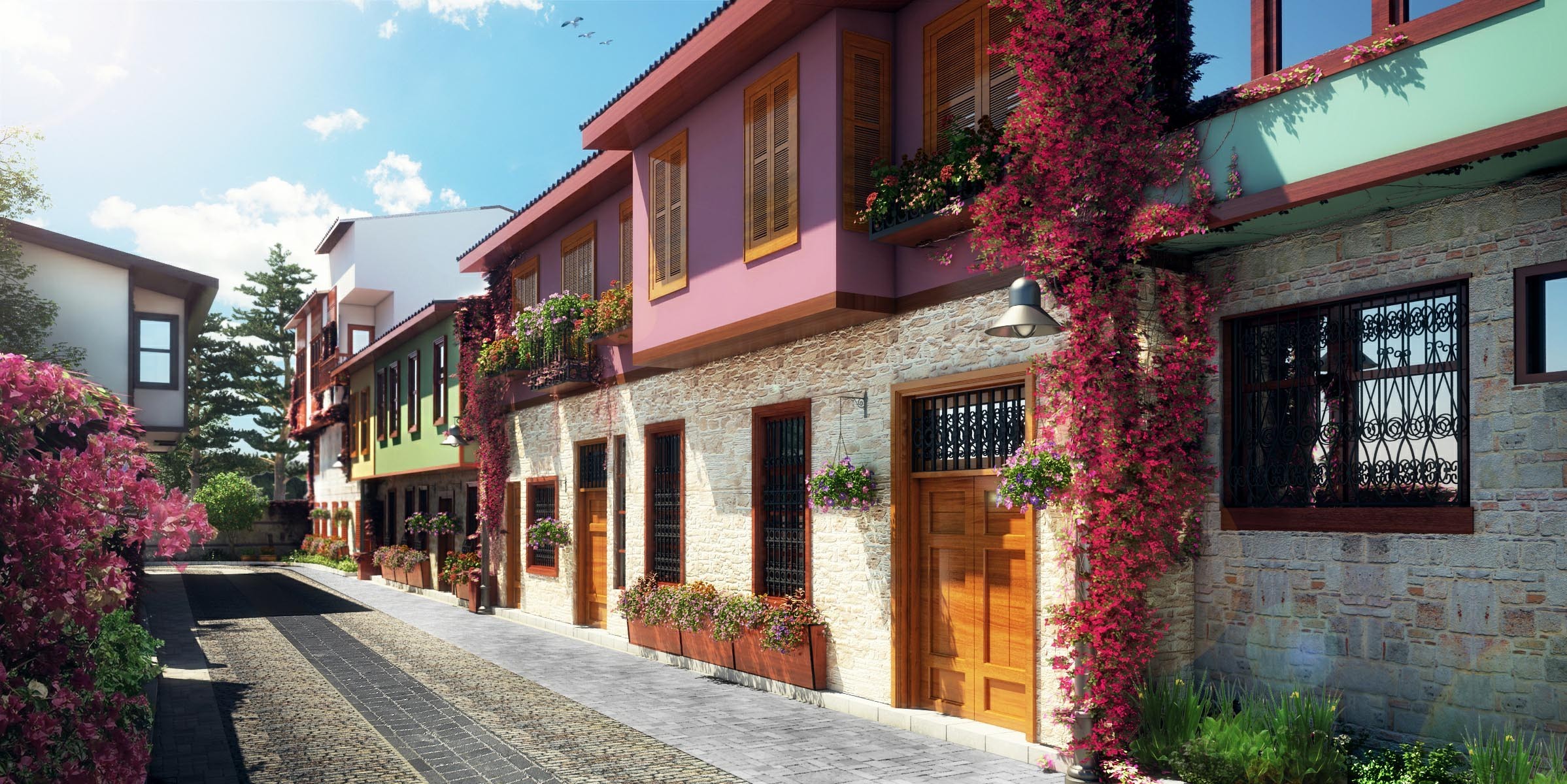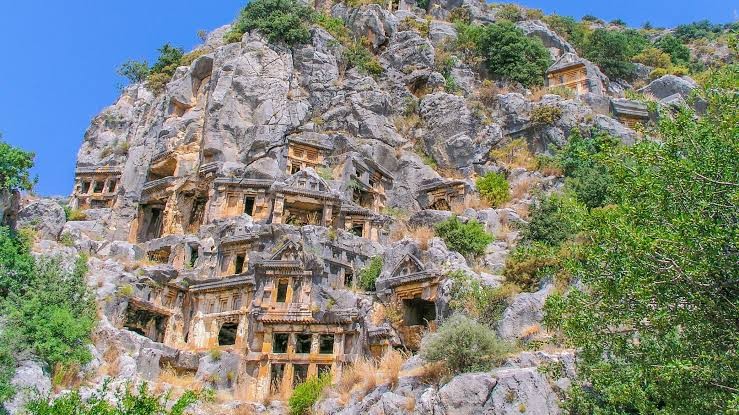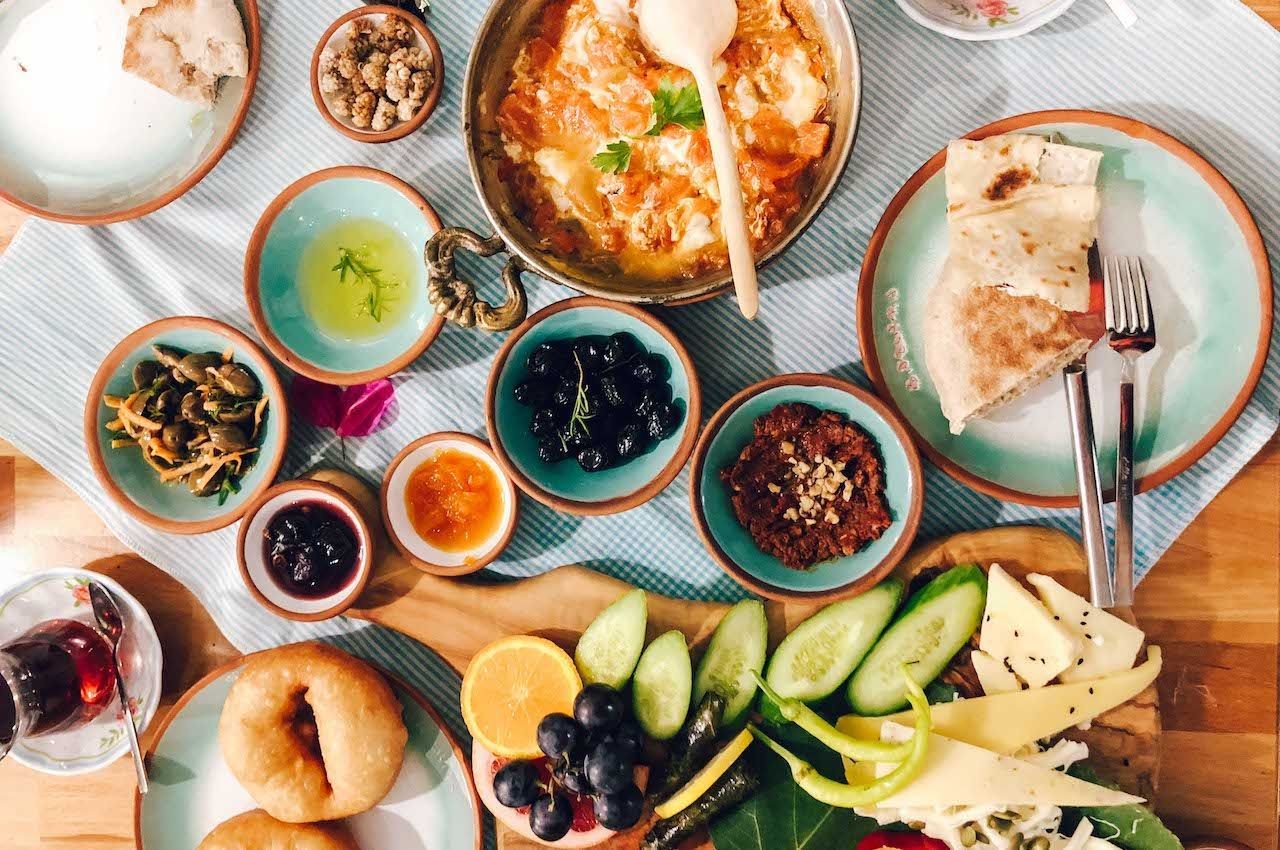A visit to the ruins of the ancient city of Termessos is an unforgettable experience, completely different from visiting ancient cities located along the Mediterranean coast. First of all, to get to Termessos, you need to travel to the altitude of 1000 meters, deep into the Taurus mountain range. The difficulties of this journey are quickly compensated by the vista seen from the ancient theater which is considered to be most ideally situated of all the ancient buildings of its kind in Turkey. Secondly, this Eagle's Nest, as Termessos was called by Alexander the Great, lies in the National Park where the remains of ancient buildings are nestled among pine forest and a number of rare plant species grow undisturbed by mass tourism. Finally, Termessos is shrouded in legends and has been the object of fascination and studies conducted by many travelers and scholars, most notable of them being Karol Lanckoroński - a Polish researcher of Pamphylia who traveled throughout this region in the end of the 19th century. The uniqueness of this place has not gone unnoticed by international organizations - Güllük Mountain National Park and the ruins of Termessos are among the candidates for the UNESCO World Heritage List.
7 Famous Archeological Sites in Antalya
Discover Antalya09 June 2020Let's check out the top 7 archaeological sites that you cannot miss out on during your trip to Antalya!
1. Termessos Ancient City
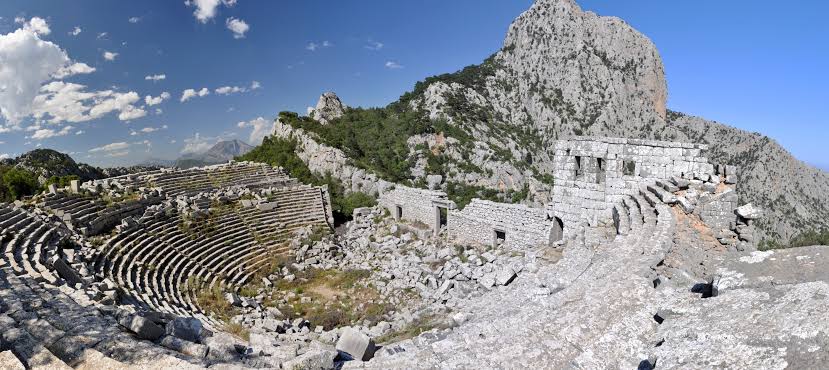
2. Theatre in Aspendos
The theatre in Aspendos is considered to be the best-preserved theatre of antiquity. The Roman builders of this structure managed to express the state of ideal balance between the auditorium and the skene building and, what's more, the whole theatre matches perfectly into the landscape.
According to a legend, the construction of this theatre resulted from the competition organised by the ruler of Aspendos. The aim of this competition was to build a structure that will contribute most to the city's prosperity, and the winner was to be awarded the daughter of the ruler. Two competitors qualified to the final round. The first of them constructed the system of canals and aqueducts that supplied Aspendos with running water. The ruler was almost convinced to give him the hand of his daughter but decided to visit the theatre, built by the second competitor, for the last time. When he stood on the highest point of the theatre, suddenly a clear voice whispered directly into his ear: 'Your daughter must be mine!' When he looked around in surprise, he saw the builder of the theatre standing on the scene. The theatre's acoustics impressed the ruler so much that he immediately decided in favour of its builder. The wedding took place, naturally, in the theatre itself.
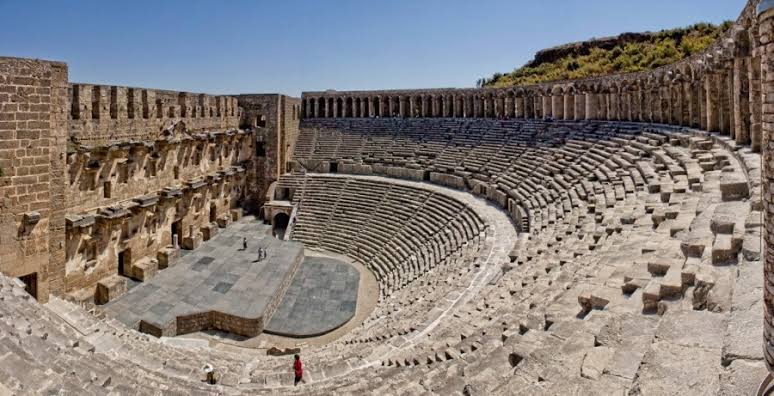
3. Hadrian's Gate
Antalya's most beautiful monument is undoubtedly the monumental gate leading into the Kaleiçi. It is called the Hadrian's Gate (tr. Hadriyanüs Kapisi) or the Triple Gate (tr. Üçkapılar). The first name is a memorial of the ancient history of the city, when, in the second century AD, it was visited by the Roman Emperor Hadrian, while the second term refers to the appearance of the monument, which has three archways.
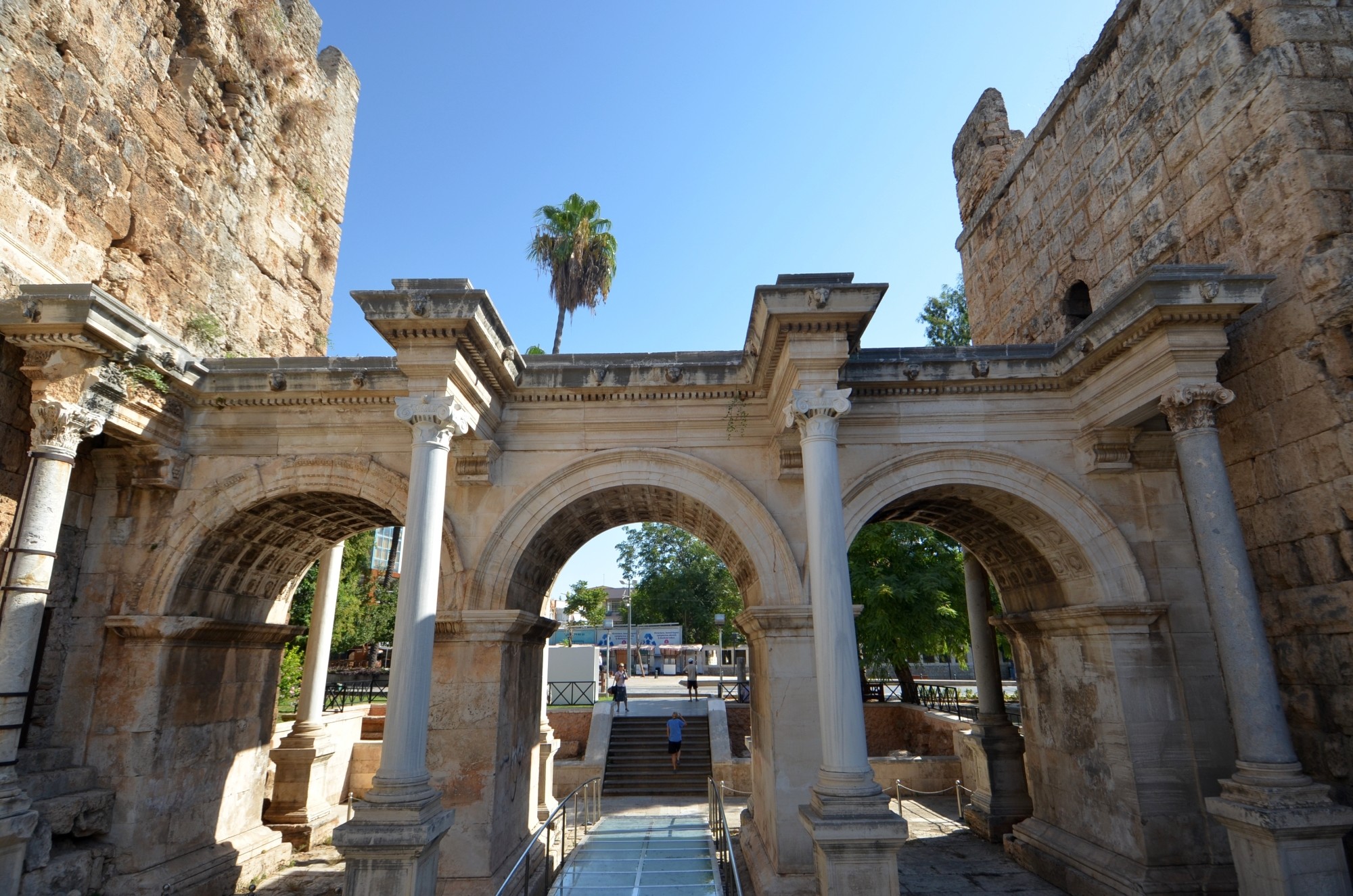
4. Theatre in Ancient City of Myra
Myra was a leading city of the Lycian Union and surpassed Xanthos in early Byzantine times to become the capital city of Lycia. Its remains are situated about 1.5 km north of today's Demre, on the Kaş-Finike road.
Myra's Greco-Roman theatre is the largest theatre in Lycia and one of the main attractions of Myra, still in good shape. Its double-vaulted corridors are still preserved and an inscription in a stall space reads "place of the vendor Gelasius" - the location of an ancient concessions stand. It has 38 rows of seats and its facade was richly decorated with theatrical masks and mythological scenes.

5. Apollo Temple in Side
The best preserved temple of the group of three temples on the tip of the peninsula is the one dedicated to Apollo, the Greek god of beauty, light, the patron of the arts and the guide of the Muses. Some coins minted in ancient Side show the figure of Apollo standing in front of his temple.
From an architectural point of view, this temple was a peripteros i.e. it was surrounded by a colonnade on all four sides of the inner chamber (called cella or naos). In the case of the temple of Apollo this colonnade was executed in the Corinthian order. Each longer side of the building was originally adorned with 11 columns and both shorter sides were decorated with 6 columns.
The stylobate of Apollo's temple, that is the top step of the platform on which colonnades of temple columns were placed, has the dimensions of about 16 meters (52 feet) by 30 meters (98 feet). Five columns that are currently standing were re-erected as part of the reconstruction work carried out in the 80s of the 20th century under the supervision of Professor Jale İnan. The frieze placed above them depicts the heads of Medusa - a mythological monster that had the face of a human female with living venomous snakes in place of hair.
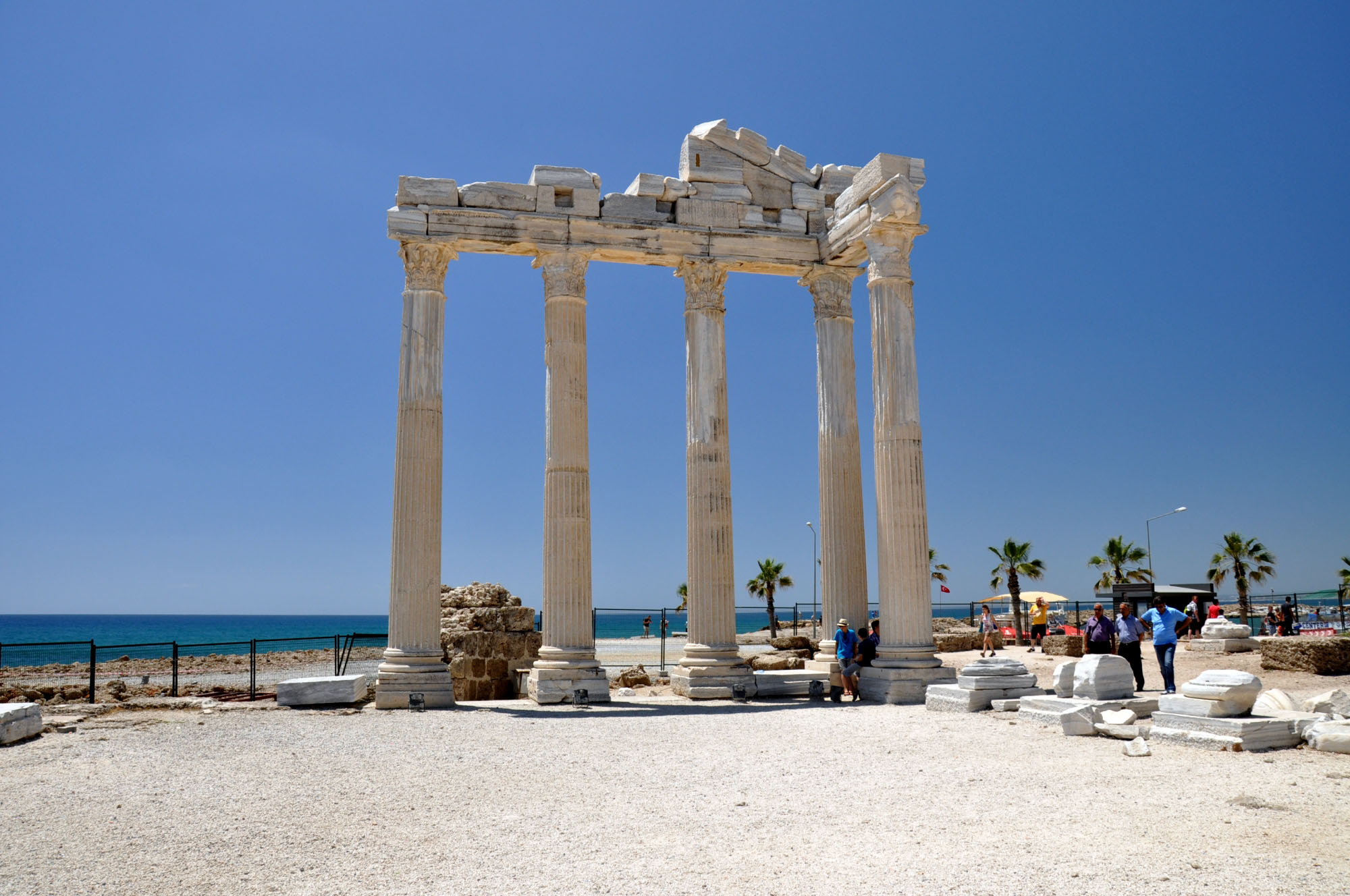
6. Roman aqueducts in Aspendos
The aqueducts in the ancient city of Aspendos, located in the southern province of Antalya’s Serik district, have witnessed centuries of history.
The one-kilometer-long and 15-meter-high aqueducts, which bring water to Aspendos from the mountains, reveal the talent of the engineers who built them. These rare and ancient artifacts are called the lifelines of the city.
The aqueducts also garner attention because of their stones, selected and formed by the hands of master builders. An inscription in Aspendos reads that the aqueducts, which draw many visitors and photographer aficionados from Turkey and the world, were built by Tiberius Claudius Italicus for the service of the city.
Because of their architectural features and construction, the aqueducts are thought to have been built in the middle of the 2nd century.
For centuries, there have been many legends told about the aqueducts. The most famous story is as follows:
The King of Aspendos had a beautiful and attractive daughter as his sole child. Numerous young nobles wanted to marry the girl. Because of the high number of suitors, the king, in order to justly solve the problem, declared, “I will marry my daughter to the one who constructs the most magnificent building.”
There were two architects who wanted to marry the princess and they both presented two wonderful buildings. One constructed the theater and the other one constructed the aqueducts.
The king decided to give his daughter to the architect of the aqueducts, but, while visiting the newly finished theater, he suddenly heard a whisper, “I am going marry the king’s daughter. I am going to marry the king’s daughter.” The king was surprised. As he tried to find the origin of the voice, he noticed the architect was standing on the scene. The king, noticing the excellent acoustics of the theater, shouted at him, “Dear architect, from now on, my daughter belongs to you.”
And according to the legend, these two young people were married in a perfect wedding ceremony held in the theater, which is just as famous as the aqueducts.

7. Council of Nicaea in Lycia
The Lycians had a similar alphabet with the Phrygians and their language, which was similar to the Luwian language, has not been interpreted yet. The Lycians had a family order in which they were dependent upon the mother and they were respectful to the women. They were using their mothers’ name instead of the fathers’. ‘Lada’ (woman), which is a very old Lycian word, has been used in the Indian-Europe languages later on.
Strabon indicates that the Lycians lived justly and led their lives in a civilized and upright way on the lands of their ancestors. The Lycian union was consisted of 23 cities which had the right to vote. The biggest cities in the union had 3 rights of vote, the medium cities had 2 and the rest had 1 right. The cities which had 3 rights of vote were Ksanthos, the capital of the union, Patara, Pinara, Olympos, Myra and Tlos. The Congress which gathered at the council building at Patara elected firstly a Lykiarkh (president) and then other officers. War, peace and agreements were discussed by the committee and members of the committee adopted a resolution consequently. The constitution of the democratic union that determined the administrative structure inspired the US State Law.
